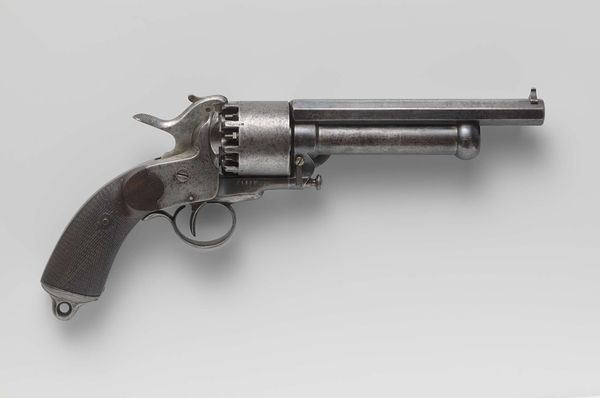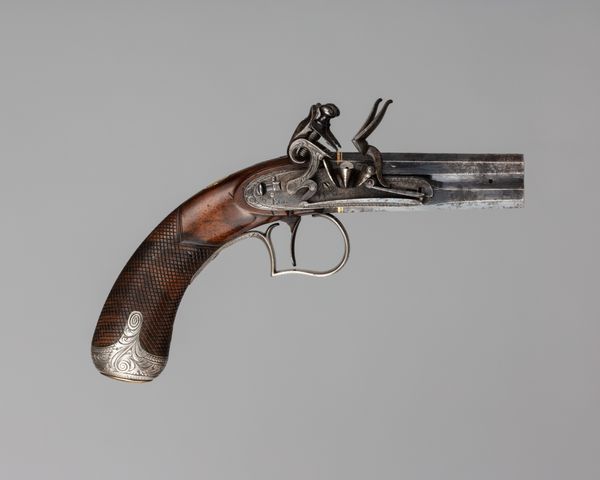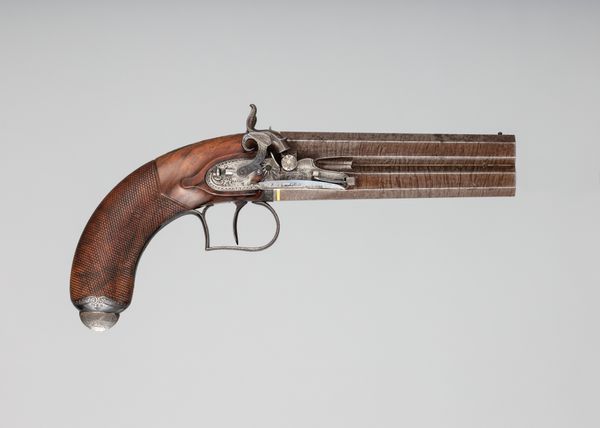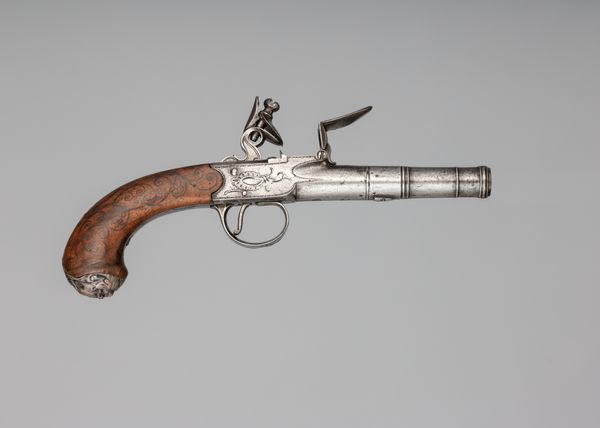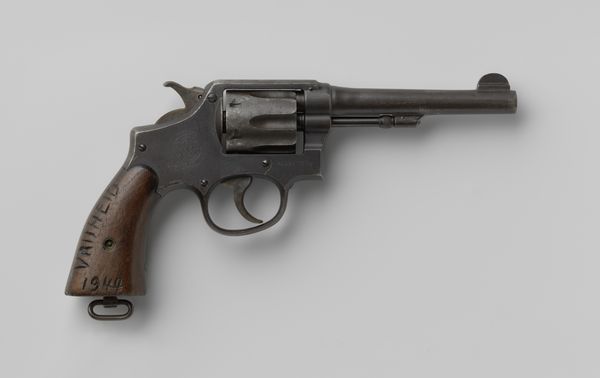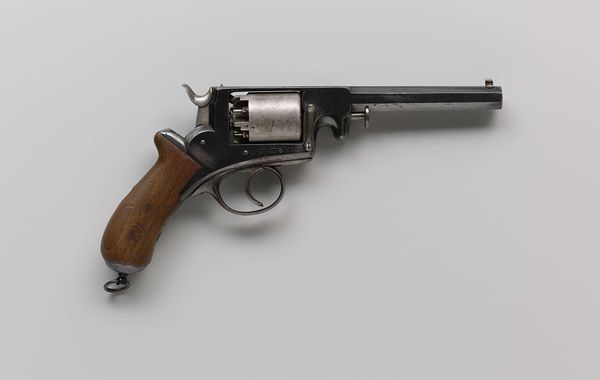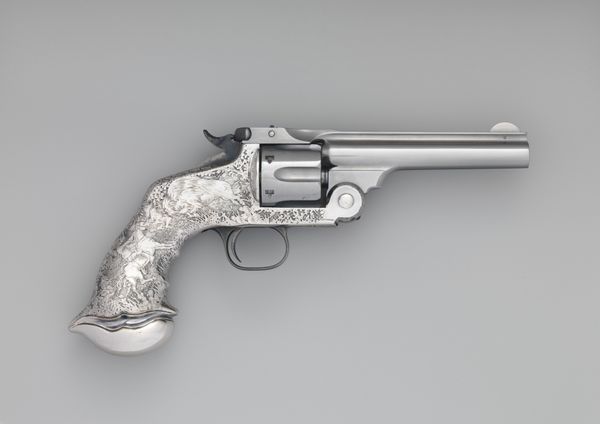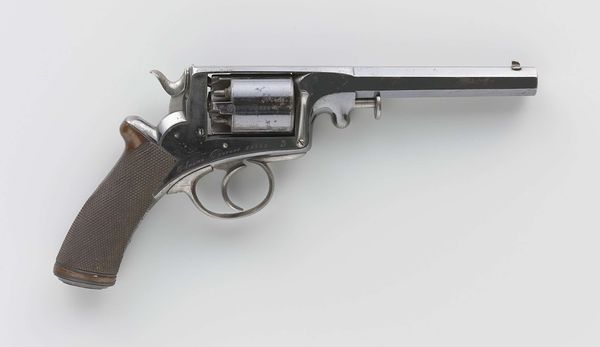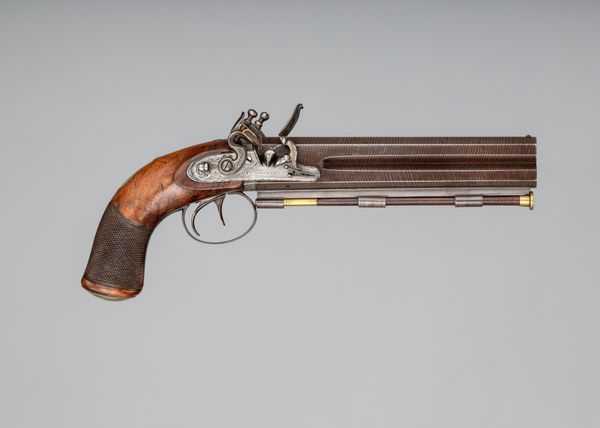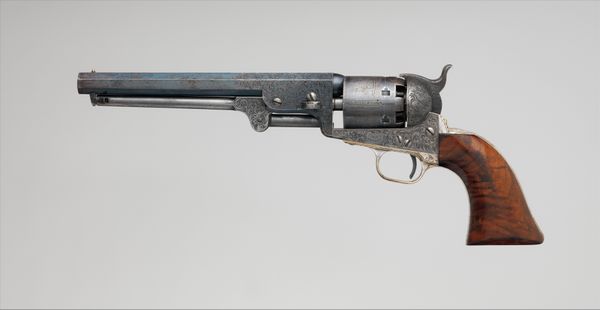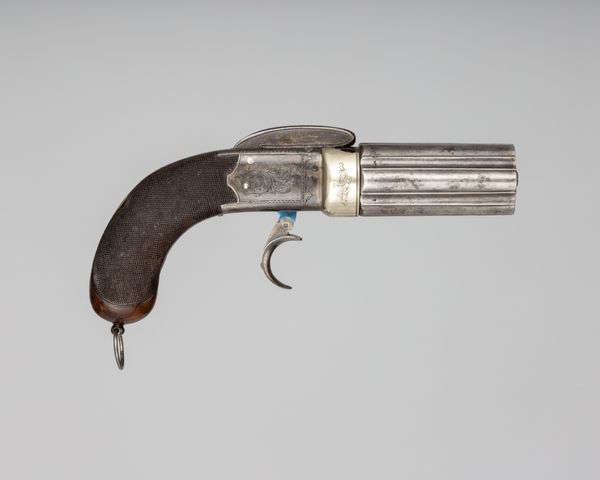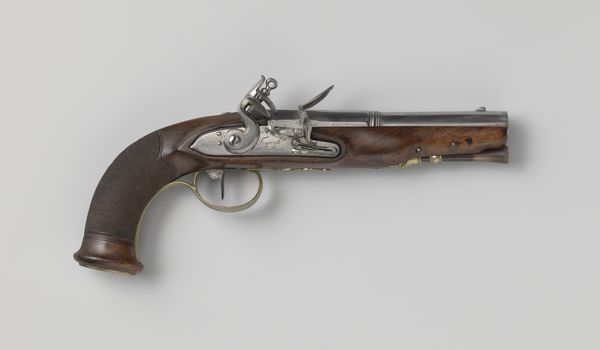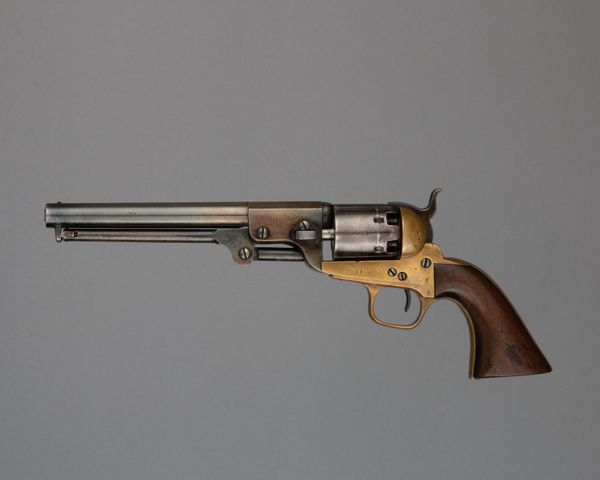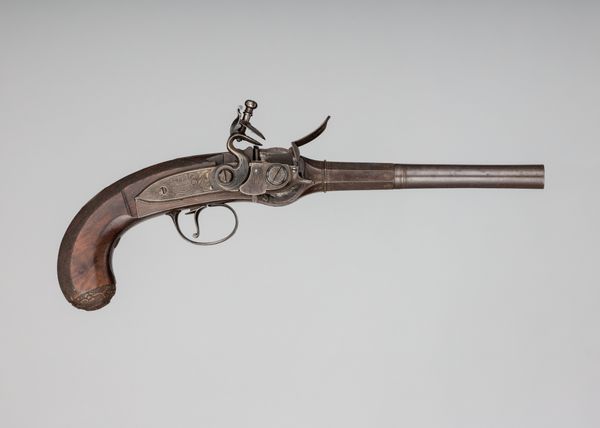
Forsyth Patent Second Model Sliding Primer Over-and-Under Pistol with Case and Accessories 1799 - 1849
0:00
0:00
metal, sculpture, wood
#
metal
#
sculpture
#
england
#
sculpture
#
wood
#
academic-art
Dimensions: Pistol (a): L. 9 in. (22.9 cm); L. of barrels 4 1/16 in. (10.3 cm); Cal. of barrels .54 in. (1.4 cm); Wt. 1 lb. 12 oz. (793.8 g); flask (b): L. 3 1/8 in. (7.9 cm); Wt. 0.5 oz. (14.2 g); oil can (c); H. 5/8 in. (1.6 cm); Wt. 1.6 oz. (45.4 g); cleaning rod (d): L. 6 3/16 in. (15.7 cm); Wt. 3.1 oz. (87.9 g); case (e): H. 2 5/8 in. (6.7 cm); W. 11 5/8 in. (29.5 cm); D. 6 3/4 in. (17.1 cm); Wt. 2 lb. 10.3 oz. (1199.2 g)
Copyright: Public Domain
This is a cased percussion pistol made by Alexander John Forsyth, a Scottish clergyman, in the early 19th century. Forsyth's invention of a new firing mechanism, using fulminate of mercury, revolutionized firearms technology. It’s hard to overstate the social impact of Forsyth's invention. Before this, firearms relied on flintlock mechanisms that were prone to misfires, especially in damp conditions. Forsyth's invention offered greater reliability and speed, and was quickly adopted by the British military and sporting shooters. In this example, the ornamentation and the presence of a case and accessories show a luxury item, intended for wealthy consumers. The pistol reflects a society grappling with rapid technological advancements and changing social structures. The history of science and technology, military records, and estate inventories are essential resources for understanding this object in its time. By considering these contexts, we reveal how new inventions both reflected and shaped the social landscape.
Comments
No comments
Be the first to comment and join the conversation on the ultimate creative platform.
